#princeton university press
Text

Italo Calvino to Issa I. Naouri ['Īsà Al-Nā.'Ūrī] – Amman, in Letters, 1941–1985 by Italo Calvino, Selected and with an Introduction by Michael Wood, Translated by Martin McLaughlin, Princeton University Press, Princeton, NJ, and Oxford, 2013, p. 358-359
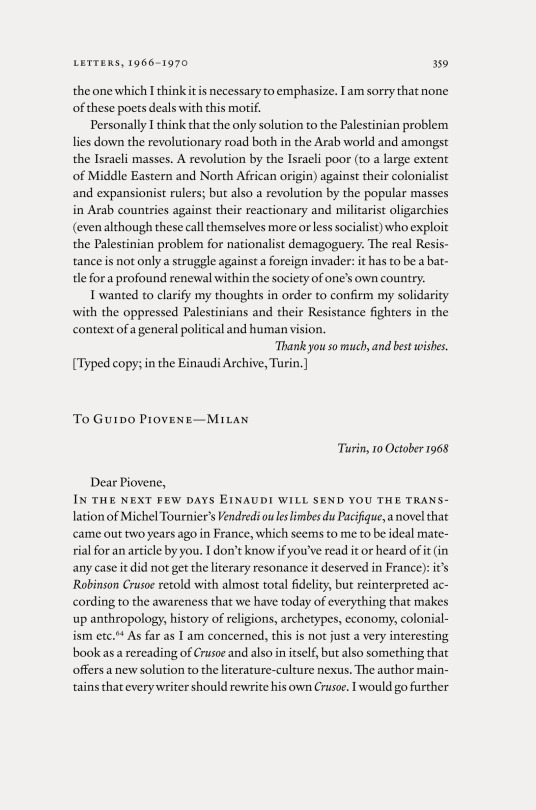
Torino, 10 October 1968
Dear Mr Naouri,
I have read the poetry of the Palestinian resistance that you have kindly sent me. They seem to be poets of powerful expressive force, full of sincere poetic and human warmth.
The best thing would be to find a journal to publish these poems, I will try to contact a friend to bring them to journal’s attention. Of course, in us Europeans the trauma of the persecution of the Palestinians has a special resonance because their current persecutors suffered—in themselves and in their families—persecutions that were the most horrific and inhuman in centuries, both under Nazism and also a long time before that. That the victims of the past should turn into the oppressors of today is the most distressing fact, the one which I think it is necessary to emphasize. I am sorry that none of these poets deals with this motif.
Personally I think that the only solution to the Palestinian problem lies down the revolutionary road both in the Arab world and amongst the Israeli masses. A revolution by the Israeli poor (to a large extent of Middle Eastern and North African origin) against their colonialist and expansionist rulers; but also a revolution by the popular masses in Arab countries against their reactionary and militarist oligarchies (even although these call themselves more or less socialist) who exploit the Palestinian problem for nationalist demagoguery. The real Resistance is not only a struggle against a foreign invader: it has to be a battle for a profound renewal within the society of one’s own country.
I wanted to clarify my thoughts in order to confirm my solidarity with the oppressed Palestinians and their Resistance fighters in the context of a general political and human vision.
Thank you so much, and best wishes.
[Typed copy; in the Einaudi Archive, Torino]
#graphic design#correspondence#book#italo calvino#issa naouri#issa i. naouri#michael wood#martin mclaughlin#princeton university press#fondazione luigi einaudi#1960s#2010s
43 notes
·
View notes
Text
Molds, Mushrooms, and Medicines
This is the story of the human relationship with the fungi, from the billions of yeasts that live in the digestive system and cover our skin, to the fungi that we use as food and to produce medicines, and our dependence on mushroom colonies that sustain forests. Nicholas Money takes readers on a guided tour of a marvelous unseen realm, describing the continuous conversation between our immune systems and the teeming mycobiome inside the body, and how we can fall prey to life-threatening infections when this peaceful coexistence is disrupted. He also explores our complicated relationship with fungi outside the body, from wild mushrooms and cultivated molds that have been staples of the human diet for millennia to the controversial experimentation with magic mushrooms in the treatment of depression.
What is the big idea behind your book?
NPM: The big idea is that we are affected by fungi throughout our lives, from our fetal life in the womb, to birth, childhood, adulthood, and at the end of life. Fungi affect our bodies after death too, when their colonies participate in the decomposition of the solid tissues in the soil. The fungi are with us at every moment, in an intimate fashion as they reproduce on the skin and in the digestive system, and in an extended way when we use them as a source of food and medicines. This is an ancient relationship that has changed during our evolutionary history and intensified when we developed agricultural practices and, most recently, as we have adopted fungi in biotechnology. Our interactions with the fungi go even further when we think about our dependence on their ecological activities, including the roles of the fungi in fertilizing soils, purifying water, and supporting plants by forming mycorrhizas with their roots. I wanted to tell the whole story in this book, which has captivated me since I began working on the fungi as a graduate student in the 1980s. It is easy to dismiss the fungi as the stuff of fairy tales, but there is so much more to the deep relationship between humans and fungi.
What is one of the features of the book that you think will surprise readers?
NPM: The fast pace of discovery in medical mycology is really inspiring. Earlier generations of mycologists misunderstood the fungi that they found on the body, regarding most of them as germs that damaged hospital patients and overlooking the significance of the yeasts growing peacefully on everyone else. Even when molecular genetic techniques began to reveal the incredible diversity and number of microbes in the gut, the fungi were missed because the methods were limited to identifying the DNA sequences of bacteria. This picture is changing at last, and new investigative methods are exposing the yeasts and molds multiplying from scalp to toes on the outside of the body and from mouth to anus on the inside. As this examination of the fungi has proceeded, the vision of the microbiome as a mostly bacterial territory has shifted to an appreciation of the diverse communities of fungi that fight and cooperate with bacteria through webs of chemical interactions to make a living on the body. Through these innovations we are beginning to fathom the extraordinary influence of the mycobiome on our health and well-being.
“Appreciating the fungi … can begin with something as simple as looking at a mushroom—this beautiful oddity of nature—or inhaling the wondrous scent of a handful of rotting pine needles. There is so much beauty in this orgy of decomposition.”
What did you find most surprising when you were researching the subject of the mycobiome (the fungal part of the microbiome)?
NPM: The size of fungal cells is an esoteric detail with huge consequences. Billions of fungi, mostly yeasts, live in the gut alongside trillions of bacteria. These gut fungi weigh no more than a raisin, but their combined surface area is equivalent to an eight-person dining table. This huge area of fungal cell wall material is moving through the digestive system all the time, which may explain how the fungi punch above their weight in their effects on our health. Recent research has shown that yeasts and molds are associated with a range of illnesses in the gut ranging from inflammatory bowel disease to colorectal cancer. Although it is difficult to distinguish between cause and effect when we find changes in the numbers and types of fungi in these illnesses, some specialists are convinced that the fungi are a missing link in medicine.
What concerns you most about the future of our relationships with the fungi?
NPM: The ecological importance of the fungi, including their role in supporting plant growth and their efficiency as decomposers has led popularizers of mycology to suggest that fungi can restore logged forests, clean water polluted by oil spills, and even break down radioactive waste. These claims are unfounded, but they have convinced many young people that there are relatively simple remedies for the human impact on the biosphere. The actions of the fungi are amazing, but they will not save us from ourselves. In a similar vein, many of the assertions about the medicinal properties of mushrooms are absurd. Mycology is a field that has attracted a lot of wishful thinking, but I have always believed that the facts about the biology of the fungi are far more interesting than the fiction. This book sets the record straight.
Did anything make you laugh as you worked on this book project?
NPM: There is great humor in some of the pronouncements made by the more colorful figures who have promoted mycology in the last century. For example, Terence McKenna, who took “heroic doses” of drugs in the 1970s, declared that the psilocybin molecule found in magic mushrooms was so unusual that it must have originated elsewhere in the galaxy. He went on to postulate that psilocybin mushrooms were a higher form of intelligence that had arrived from outer space and shaped the evolution of the human brain. Although he faces some stiff competition, McKenna’s alien mushroom theory is one of the least enlightening things ever written about fungi. When you have made the scientific study of mycology your life’s work, as I have done, it impossible to treat anyone who takes an idea like this seriously as anything but a buffoon.
What is one of the questions that continues to puzzle researchers about the fungi?
NPM: Despite decades of research, we are a long way from understanding why only a few hundred of the hundreds of thousands of species of fungi damage our tissues. There are some clues. These include the way that some fungi can evade the body’s defenses by hiding inside the cells of the immune system until they find themselves inside the central nervous system. This is known as the Trojan Horse strategy and allows these microbes to reach the brain and cause mayhem. On the other hand, pathogenic fungi are not attacking us in any deliberate fashion, because the body is a dead end for them. Unlike viruses, fungi get stuck in our tissues and cannot get out. Some investigators are convinced that coping with the warmth of the body is a big part of the explanation for fungal virulence, but this mild thermotolerance is probably inconsequential. Tens of thousands of fungi that live in the soil can grow at our body temperature and never cause disease. The difference lies in the chemical conversations between the body and the microbes that cause problems, which explains why damage to the immune system makes us so vulnerable to fungal infections.
“Life without fungi is impossible. There are as many of them living on the human body as there are stars in the Milky Way and, more importantly, they have a far greater influence on our lives than all but one of these galactic incinerators. They are everywhere and will outlive us by an eternity: in myco speramus.”
Nicholas P. Money is professor of biology at Miami University in Ohio and the author of many books on fungi and other microbes, including The Rise of Yeast: How the Sugar Fungus Shaped Civilization, Mushrooms: A Natural and Cultural History, and Microbiology: A Very Short Introduction.
12 notes
·
View notes
Photo
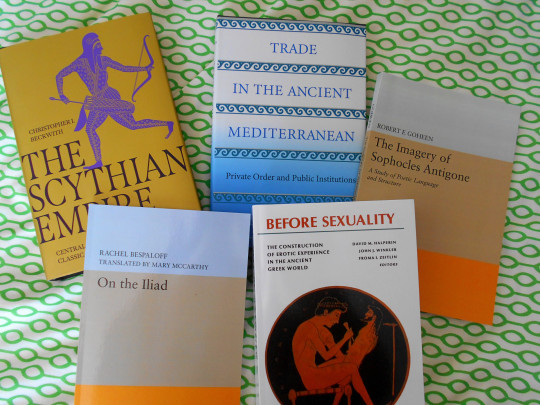
Ancient history books I bought on discount in January from Princeton University Press!
41 notes
·
View notes
Note
I ask this every month or two but what have you been reading lately?
•True West: Sam Shepard's Life, Work, and Times (BOOK | AUDIO | KINDLE) by Robert Greenfield
•The Oswalds: An Untold Account of Marina and Lee (BOOK | AUDIO | KINDLE) by Paul R. Gregory
•Wahhabism: The History of a Militant Islamic Movement (BOOK | KINDLE) by Cole M. Bunzel
•The Madman in the White House: Sigmund Freud, Ambassador Bullitt, and the Lost Psychobiography of Woodrow Wilson (BOOK | KINDLE) by Patrick Weil
This is a really interesting new book about one of the more unique Presidential biographies ever written. William C. Bullitt was a longtime American diplomat and former supporter of Woodrow Wilson who blamed the failure of American ratification of the Treaty of Versailles following World War I on the worrisome personality changes he witnessed in President Wilson after Wilson suffered a stroke and serious health issues in the final years of his Presidency. Bullitt was close to Sigmund Freud and he teamed with Freud to write a psychological biography about Wilson several years after Wilson's death. The book they wrote (Thomas Woodrow Wilson: A Psychological Study) was very controversial and wasn't even published until nearly 30 years after Freud himself died. It's a really fascinating story and Weil's book -- as well as the original book by Bullitt and Freud -- reveal the potential dangers behind Presidential disability.
•The World: A Family History of Humanity (BOOK | AUDIO | KINDLE) by Simon Sebag Montefiore
•Knowing What We Know: The Transmission of Knowledge from Ancient Wisdom to Modern Magic (BOOK | AUDIO | KINDLE) by Simon Winchester
I try to read every book that Simon Winchester writes. It seems like he's written books about basically every subject under the sun, and I can't think of a single one that I didn't find interesting.
•The Sergeant: The Incredible Life of Nicholas Said: Son of an African General, Slave of the Ottomans, Free Man Under the Tsars, Hero of the Union Army (BOOK | KINDLE) by Dean Calbreath
The subtitle of this book alone makes it pretty clear that this is one hell of a story about a man who lived quite a life.
#Books#Book Suggestions#Book Recommendations#Reading List#Simon Winchester#Knowing What We Know#Simon Sebag Montefiore#The World: A Family History of Humanity#The Madman in the White House#Patrick Weil#Wahhabism: The History of a Militant Islamic Movement#Cole M. Bunzel#The Oswalds#Paul R. Gregory#True West: Sam Shepard's Life Work and Times#Robert Greenfield#Sam Shepard#Crown#Diversion Books#Princeton University Press#Knopf#Harvard University Press#Harper#The Sergeant: The Incredible Life of Nicholas Said#Dean Calbreath#Pegasus Books
8 notes
·
View notes
Text
The Only Woman in the Room: Golda Meir and Her Path to Power by Pnina Lahav
The Only Woman in the Room: Golda Meir and Her Path to Power by Pnina Lahav
A feminist biography of the only woman to become prime minister of Israel
In this authoritative and empathetic biography, Pnina Lahav reexamines the life of Golda Meir (1898–1978) through a feminist lens, focusing on her recurring role as a woman standing alone among men. The Only Woman in the Room is the first book to contend with Meir’s full identity as a woman, Jew, Zionist leader, and one of…

View On WordPress
2 notes
·
View notes
Text
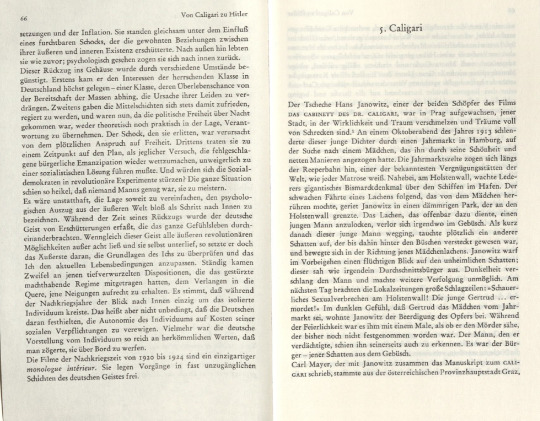

von caligari zu hitler - eine psychologische geschichte des deutschen films, siegfried kracauer, princeton university press 1947, suhrkamp 1979: der schock der freiheit/ caligari s. 49 - 83
*


roman polanski: wanted and desired, marina zenovich 2008
#siegfried kracauer#from caligari to hitler#a psychological history of the german film#princeton university press#1947#suhrkamp#1979#der schock der freiheit#caligari#richard oswald#das cabinet des dr. caligari#m#roman polanski: wanted and desired#marina zenovich#lenny#jfk#books
1 note
·
View note
Text
Practice English
share.libbyapp.com/title/5596193
View On WordPress
0 notes
Link
Naomi Kanakia is the author of two YA novels, with three more books in the works, including her first adult novel with Feminist Press (The Default World) and a nonfiction project with Princeton University Press (What’s So Great About The Great Books?, “a reexamination of the Great Books movement, and whether these much-criticized and much-praised works are worth reading if, like the author, you're not white, male, straight, and cisgender”). Naomi’s essays have been featured on Tablet, The Los Angeles Review of Books and Literary Hub, amongst others.
Topics include (breathe): working in “the highest of high culture (literary criticism) and in low culture (YA and sci-fi)”, idealising high culture only to discover “the majority of the writers, editors, agents, and critics involved simply don't have their own independent taste”, the reason why literary fiction doesn't discuss money, meritocracy, “the line between 'phony' and 'person with terrible taste'”, credibility, Azia Kim, impostors and con artists, being rejected, being celebrated, the demon of envy, being “a transfem brown YA writer who happens to write very good books”, the success of anti-racism and diversity efforts in the workplace, having fired and being fired by agents, the anti-woke movement, the lure of racial grievance and the fact “so many people only want to be seen as great, but they have no inner concept of what greatness entails.”
ENJOY.
#woke#anti woke#literary criticism#ya fiction#transfem#lgbtq+#Feminist Press#Princeton university press#nonfiction#Naomi Kanakia#longform#CRAZY LONG#crazy long longform
1 note
·
View note
Text
The Unstill Ones: Poems by Miller Oberman
The Unstill Ones: Poems by Miller Oberman. Princeton University Press, 2017. 978-0-691-17682-6
Rating: 1-5 (5 is an excellent or starred review) 3
Format: Paperback
Genre: Poetry
What did you like about the book? This collection of poetry by Miller Oberman is a unique read. Many of the poems Oberman writes are actually interpretations of Old English works. He strives to translate them into…

View On WordPress
0 notes
Text
Data Analysis for Social Science: A Friendly and Practical Introduction #ElenaLlaudet and #KosukeImai
Data Analysis for Social Science: A Friendly and Practical Introduction #ElenaLlaudet and #KosukeImai
Data Analysis for Social Science provides a friendly introduction to the statistical concepts and programming skills needed to conduct and evaluate social scientific studies. Using plain language and assuming no prior knowledge of statistics and coding, the book provides a step-by-step guide to analyzing real-world data with the statistical program R for the purpose of answering a wide range of…

View On WordPress
0 notes
Text

Jacques Hadamard, (1945), The Mathematician's Mind: The Psychology of Invention in the Mathematical Field, Preface by Philip Nicholas Johnson-Laird (1995), Princeton University Press, Princeton, NJ, 1996, pp. 124-132


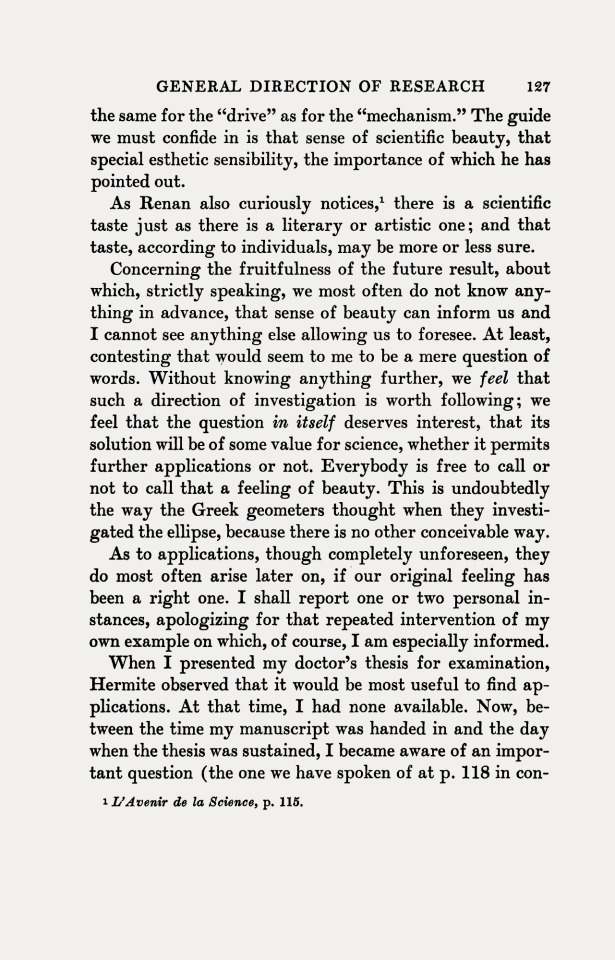
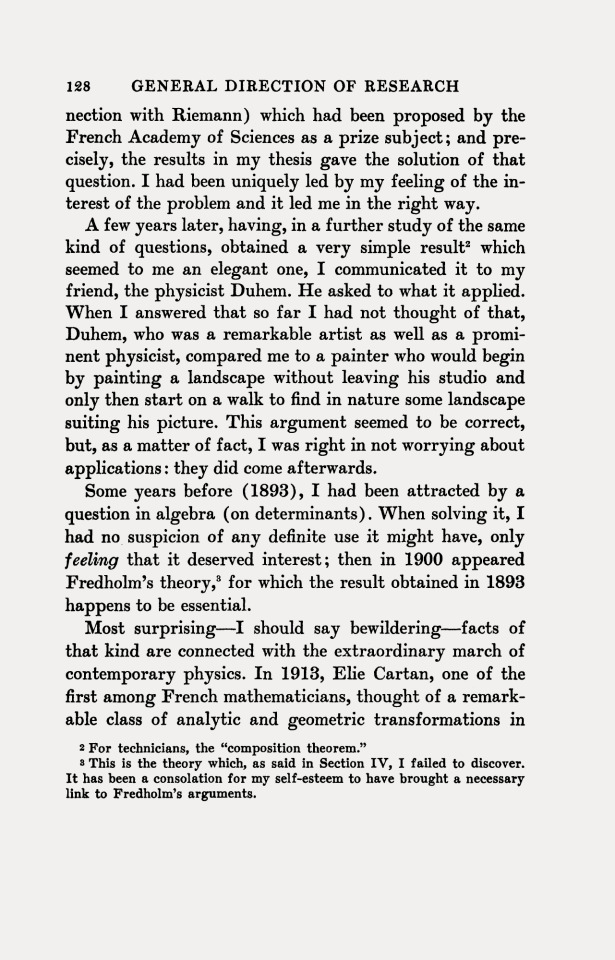
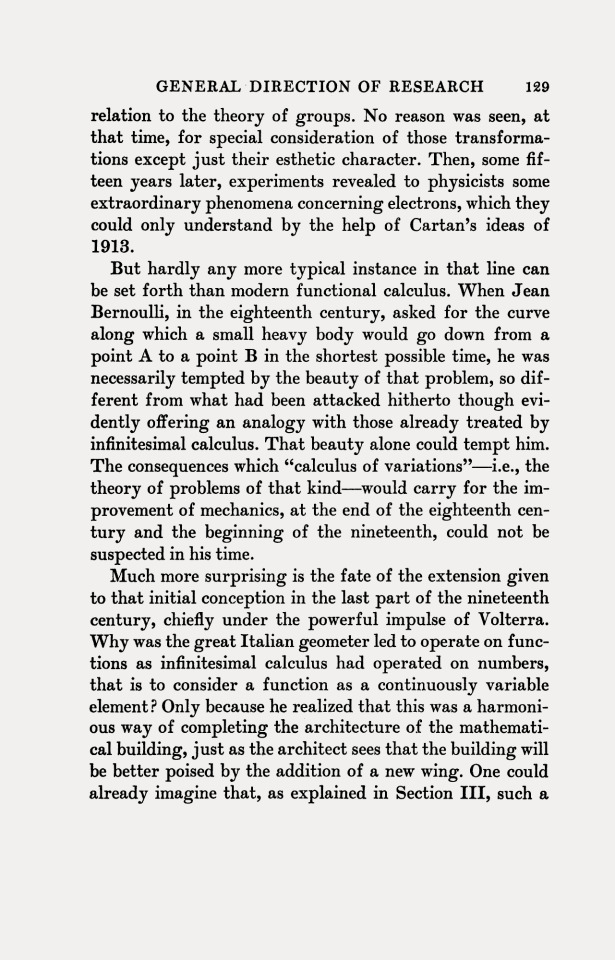
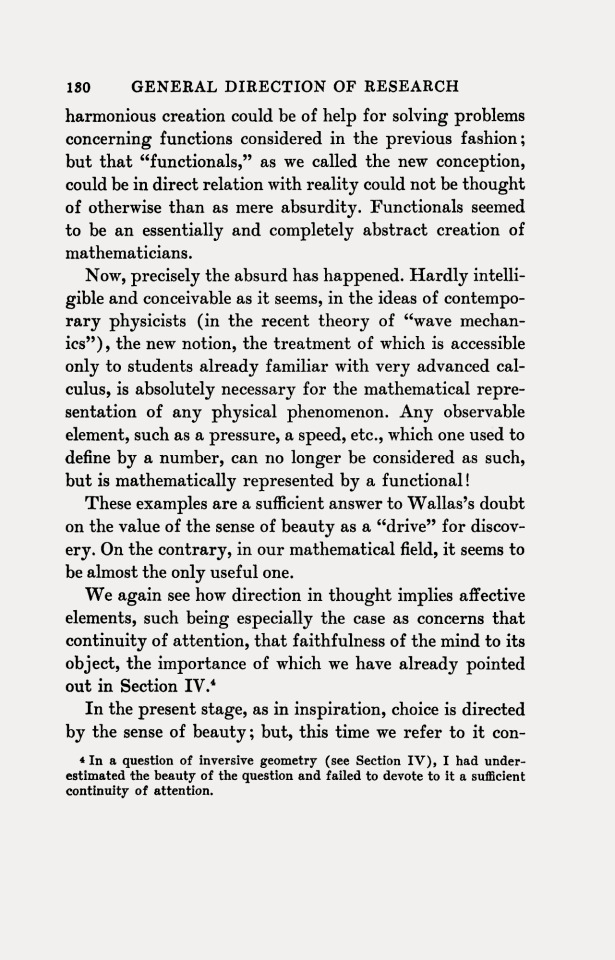
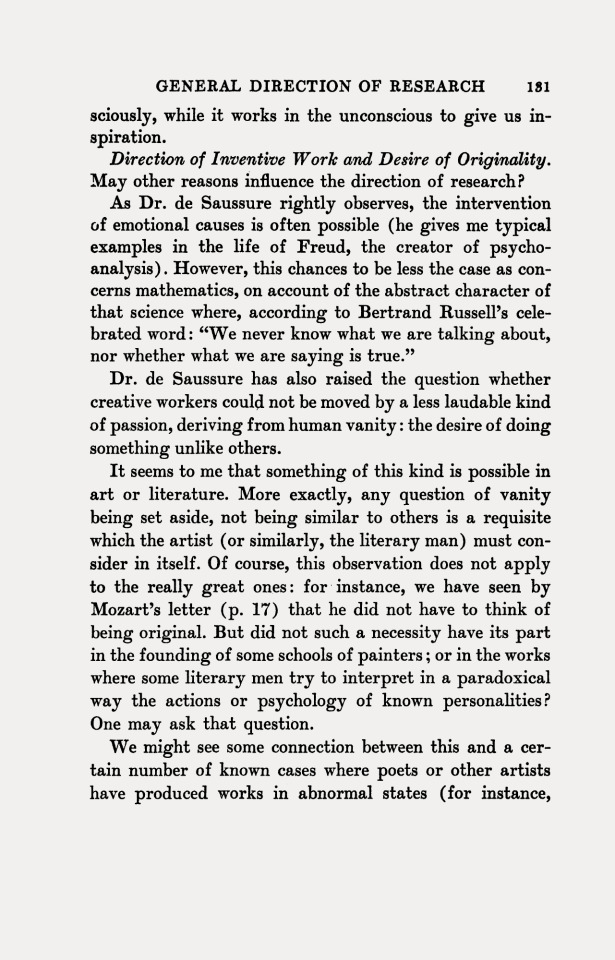
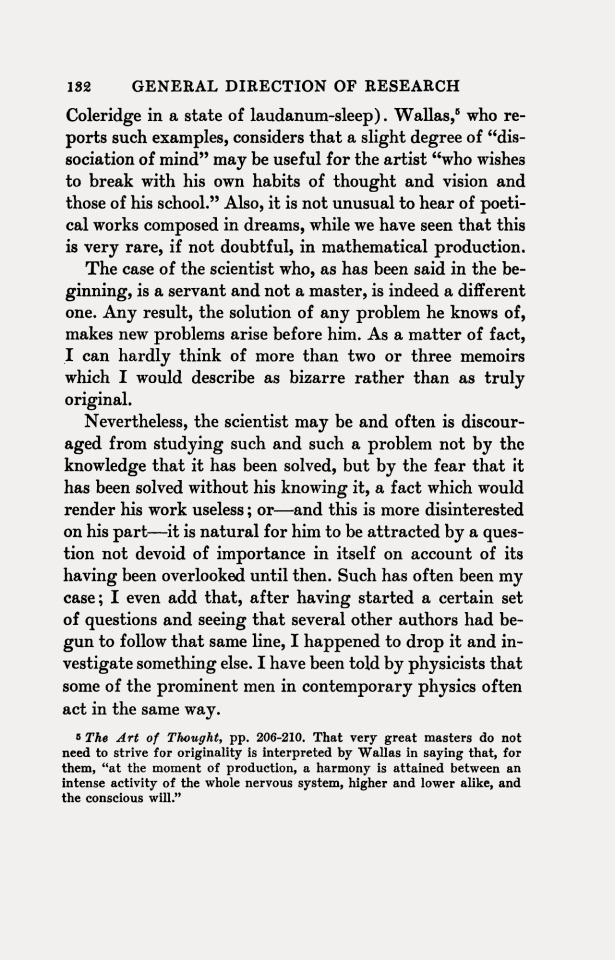
«A few years later, having, in a further study of the same kind of questions, obtained a very simple result which seemed to me an elegant one, I communicated it to my friend, the physicist Duhem. He asked to what it applied. When I answered that so far I had not thought of that, Duhem, who was a remarkable artist as well as a prominent physicist, compared me to a painter who would begin by painting a landscape without leaving his studio and only then start on a walk to find in nature some landscape suiting his picture. This argument seemed to be correct, but, as a matter of fact, I was right in not worrying about applications: they did come afterwards.» – (p. 128)
#graphic design#mathematics#philosophy of science#philosophy of mathematics#book#jacques hadamard#pierre duhem#philip nicholas johnson laird#princeton university press#1940s#1990s
13 notes
·
View notes
Text

8 notes
·
View notes
Photo

Some Princeton University Press books I got on discount in December
34 notes
·
View notes
Text
These are both about Stefania (first one for her aesthetic theory second one for her biography and Korzenie. Thanks)

7 notes
·
View notes
Note
interesting, I downloaded Firefox just to try it, and it didn't... look like that, there's no pages just a "load more"
OH! okay! OKAY! fuck me!
okay I was looking at ALL the books Princeton sells which whatever idk how that happened but in any case that was unusable I found the sale
Oh yeah - I think the problem is that there’s so many books Princeton University Press has for sale that unless you do some kind of filtering or searching (and depending on site traffic and server stuff etc) it just can’t handle too much.
And it would be SO MUCH to search through.
But! I’m glad you found the sale section and hopefully you’ll have better luck now! There’s a ton of sale items and because they’re 75% off, you can get some really great titles for like…$5.
I have yet to pull the trigger on my cart because I keep adding and removing books - but the new book about the Wife of Bath (which is NOT part of the sale just as an fyi) is a must-buy for me I think.
#I am not affiliated with Princeton University Press (except as tumblr mutuals)#and I am not being compensated by them in any way#I just love their 75% off sale and the titles they have available#just wanted to state for the record
3 notes
·
View notes
Text
In Hitler’s Munich: Jews, the Revolution, and the Rise of Nazism by Michael Brenner
In Hitler’s Munich: Jews, the Revolution, and the Rise of Nazism by Michael Brenner
Translator: Jeremiah Riemer
From acclaimed historian Michael Brenner, a mesmerizing portrait of Munich in the early years of Hitler’s quest for power
In the aftermath of Germany’s defeat in World War I and the failed November Revolution of 1918–19, the conservative government of Bavaria identified Jews with left-wing radicalism. Munich became a hotbed of right-wing extremism, with synagogues…

View On WordPress
2 notes
·
View notes